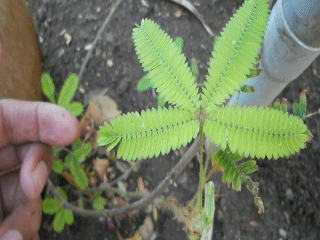The Vegetarian’s Dilemma: Do Plants Feel Pain?
By Elizabeth Olson, Environmental Science, 2018
As a long-time vegetarian, I am quite used to the reactions I get after telling people about my dietary choices. “Where do you get your protein?!” asks the hot dog-eating skeptic. “How can you live without bacon?” asks the devil’s advocate. There is one remark, though, that has always struck me as the silliest: “But what about those poor plants?”
Typically, the poser of this question is just being facetious; they’re looking to get a rise out of an angry activist and then run away snickering, clutching a cheeseburger to their chest.
However, recently I have begun to wonder: what about those poor plants?
What if every celery stalk I’ve ever eaten has screamed in pain as I closed my central and lateral incisors around its fragile neck? What if plants attempt to communicate with me in a language I just don’t understand? Are plants more intelligent than I had previously thought?
The verdict on plant intelligence has stayed relatively the same within the science community for decades: plants do not have a central nervous system, therefore they are non-sentient. This implies that plants are incapable of learning, a process usually reserved for animals, which consists of an experience or stimuli that causes an organism to behave a certain way. For example, fish learn to react to the opening of their tank’s feeding portal by swimming up to the surface. Yet new research suggests that certain plants may exhibit such behavior.
Enter: the hypersensitive, fern-like plant Mimosa pudica. Similar to that of the Venus Fly Trap, M. pudica displays reactions to a physical disturbance quickly enough to be observed by the naked eye.
Touching an M. pudica plant will cause its leaves to close up and fold at the hinge, protecting it from the offender. Last year, ecologist Monica Gagliano experimented with M. pudica by dropping specimens from 15cm and observing their consequential behavior. Naturally, the plants immediately closed up upon hitting the floor the first few times. What astonished Gagliano was that after a few sequential drops, M. pudica stopped reacting altogether — as if it had learned that the stimulus was not threatening.

She knows that the plants’ lack of response was not caused by fatigue, because after introducing a new stimulus — shaking the plant — it would repeat the same cycle of initially reacting and then tapering off. Further, after Gagliano tested the same M. pudica seven days and even one month later, they still maintained the lack of response to being dropped. If these plants were able to learn, it may be possible that a central nervous system is not required for an organism to learn, contrary to prior thought.
Though plants do not have a neural network or a brain, they do have structures that perform similar functions. Keep in mind that plants have senses just as complex as ours: for example, similar to the human sense that distinguishes up from down, plants have a sense dedicated to making sure their roots grow down while shoots grow up.
If a plant is placed on its side, its roots will reorient to grow downwards toward the earth — a process called gravitropism. Plants have many “tropisms:” phototropism (the ability to direct growth towards sunlight), hydrotropism (the ability to respond to moisture), and chemotropism (the ability to respond to chemical cues). Some plants can “hear” predators munching on a neighbor’s leaves and will secrete chemicals to defend themselves, even if the plant is not actually threatened.
All of these characteristics render a plant “conscious.”
Moreover, plants can be made unconscious with certain human anesthetics. If plants are conscious, does this mean they can feel pain? Think about the evolutionary significance of pain: it is most simply a warning message from your brain that screams “don’t do that!” in response to a hazardous action. Pain is a significant adaptation meant to further an organism’s survival by keeping it away from danger. When you think about it this way, the idea of pain in plants isn’t so far-fetched.
Some people even believe that plants can communicate telepathically. In the 1960s, an FBI agent by the name of Cleve Backster decided to hook one of his beloved houseplants up to a polygraph, just for kicks. The story has it that Backster simply thought about setting his plant on fire, and to his astonishment the polygraph reading skyrocketed, indicating that the plant was stressed out after somehow realizing it was threatened. Backster allegedly observed the same reaction in the plant after dropping live brine shrimp in a pot of boiling water in its presence.
Though scientists have not since been able to replicate this experiment, this so-called “Backster effect” got the mainstream public thinking about plant psychology. Truthfully, most botanists agree that Backster was trying to pull a fast one on us, and that the concept of plants possessing any sort of higher intelligence is reserved for science-fiction novels. Your bunny-eared cactus probably can’t read your mind, but it might be able to learn from the most primal of stimuli.
I leave you with the opportunity to decide for yourself whether plants are sentient and need to be treated with more respect than they currently receive. As for me, I’m going to continue eating plants with as much voracity as before. Unfortunately, as humans we are incapable of synthesizing a meal out of sunshine and sugar. We must consume other organisms to survive. What’s more, I’m comforted by the fact that most plants must also be eaten to survive — seeds consumed by animals while eating plants are transported and fertilized when they are excreted, ensuring the survival of a new generation. Being eaten has evolved to be part of a plant’s reproductive strategy.
So, go home and eat that stalk of celery, and try not to cringe with every bite.
